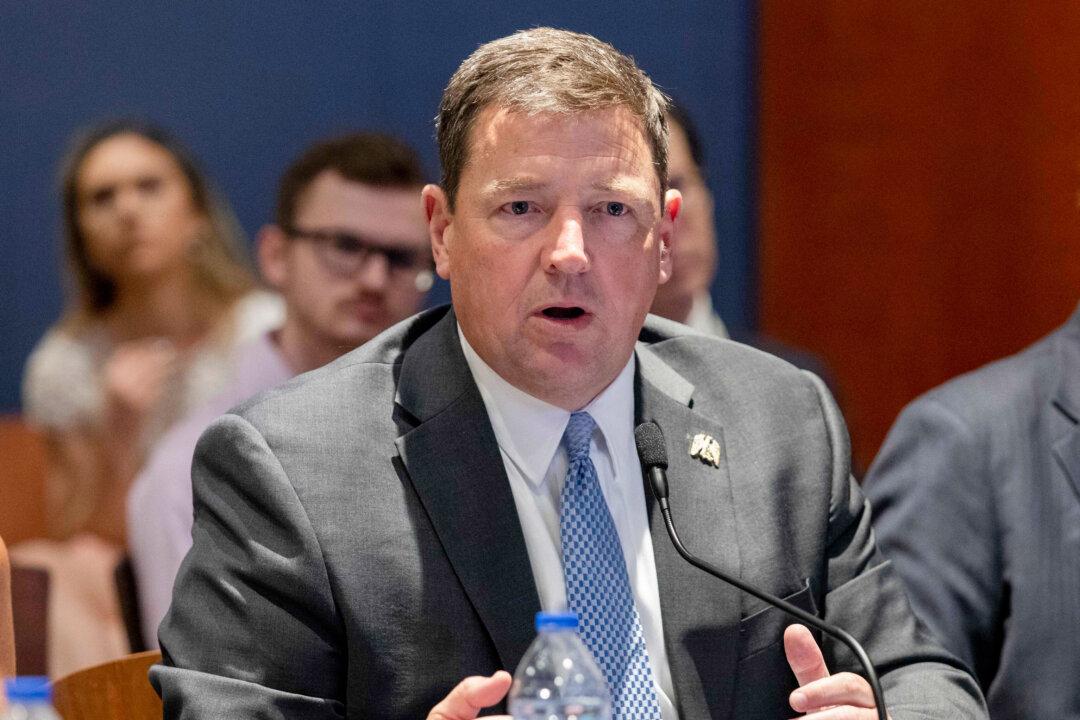Rachel Mitchell, a prosecutor based in Arizona, was chosen by Republican senators on the Senate Judiciary Committee to question Christine Ford, who accused Kavanaugh of sexually assaulting her in a Maryland home when she was 15 and he was 17.
Mitchell noted that the memo “contains my own independent assessment of Dr. Ford’s allegations, based upon my independent review of the evidence and my nearly 25 years experience as a career prosecutor of sex-related and other crimes in Arizona.”
Case is Weak
Mitchell wrote that a “he said, she said,” case is difficult to prove, but that Ford’s accusation “is even weaker than that.”“Dr. Ford identified other witnesses to the event, and those witnesses either refuted her allegations of failed to corroborate them,” she wrote. “For the reasons discussed below [in the memo], I do not think that a reasonable prosecutor would bring this case based on the evidence.”
Ford’s narrative about what allegedly happened has shifted multiple times, including offering different dates in a text to the Washington Post, a letter to Senator Dianne Feinstein (D-Calif.), and a statement to a polygrapher.
She has said the alleged assault happened in the “mid-1980s,” the “early 80s,” and one “high school summer in the early 80s,” only to settle on 1982 in September of this year. Even that date, revealed in a Post article, seemed undermined by the fact that Ford told a therapist in 2013 that the assault happened in her “late teens.”

Night of Alleged Assault
Another shift occurred when Ford described the night of the alleged assault, Mitchell noted. In a letter to Feinstein, Ford said that she heard Kavanaugh and his friend talking to other partygoers downstairs as she hid in a bathroom upstairs. But in her testimony on Sept. 27, she said she couldn’t hear them talking to anybody.She said in her letter, “I locked the door behind me. Both loudly stumbled down the stairwell, at which point other persons at the house were talking with them.”
But during the hearing, she said that she couldn’t hear them talking with others when they went downstairs, noting she “assum[ed]” the conversation took place.
Her account of who was at the party has also shifted. She told a therapist in 2012 there were four boys in the bedroom in which she was assaulted, but she claimed the therapist had misunderstood and that there were four boys at the party but only two in the bedroom. She told Feinstein in a letter that there were five people total, including herself, at the party, but in her testimony at the public hearing, she said there were six people total, with four boys in addition to herself and a female friend, Leland Keyser.
Keyser’s written letter to the committee has severely undermined Ford’s claim, as the pair are longtime friends. Keyser says she has never met Kavanaugh and was not at the alleged party. Mark Judge, Kavanaugh’s friend who Ford alleges was present when the assault occurred, has also denied that the alleged assault happened and that he was present at the alleged party, as has Patrick Smyth, who Ford claimed was at the party.

Memory Problems
Mitchell also noted that Ford’s long-term memory problems also included not being able to remember how she heard about the party, how she got to the party, how she left the party, and where exactly the party was.In her testimony, Ford claimed that she was driven from the party to her house after she left but was unable to remember who drove her and no one has come forward to identify him or herself as the driver.
Mitchell wrote that Ford has not only struggled with her long-term memory, but also her short-term memory.
Ford could not remember if she showed a full or partial set of therapy notes, or merely described the notes, to a Washington Post reporter several months ago. A Post reporter claimed in a story to have seen the notes.
Ford couldn’t remember if she actually had the notes when she messaged the Post on July 6. In her message, she wrote that she had the notes.
Ford has refused to provide the notes to the committee.




